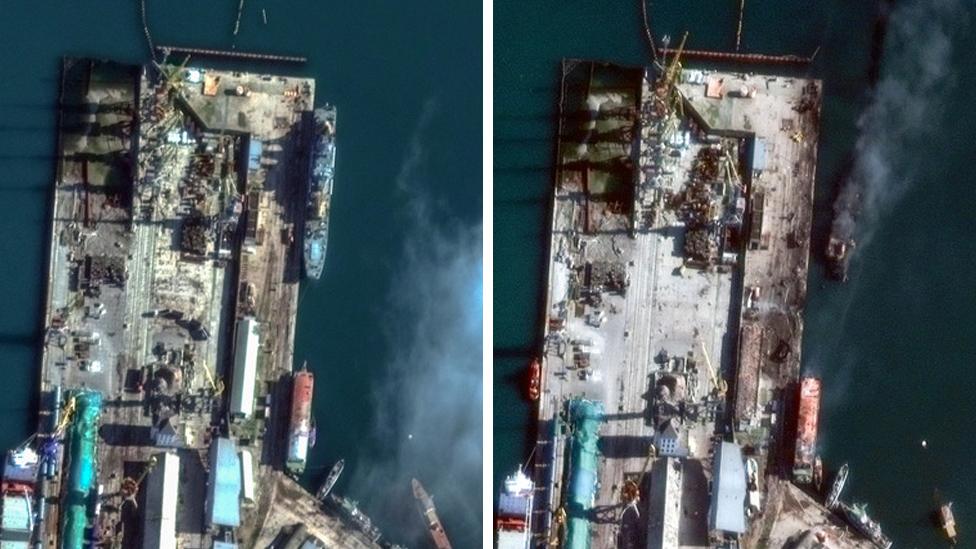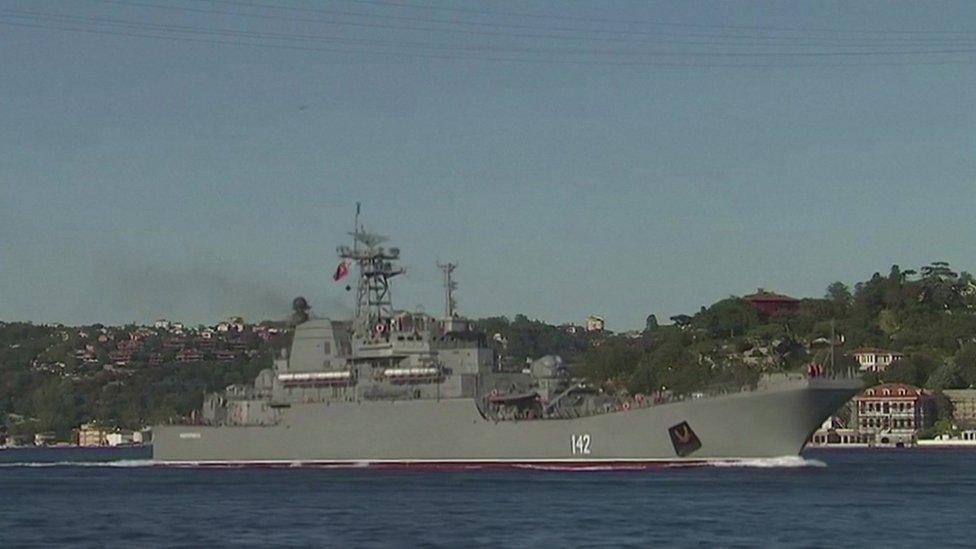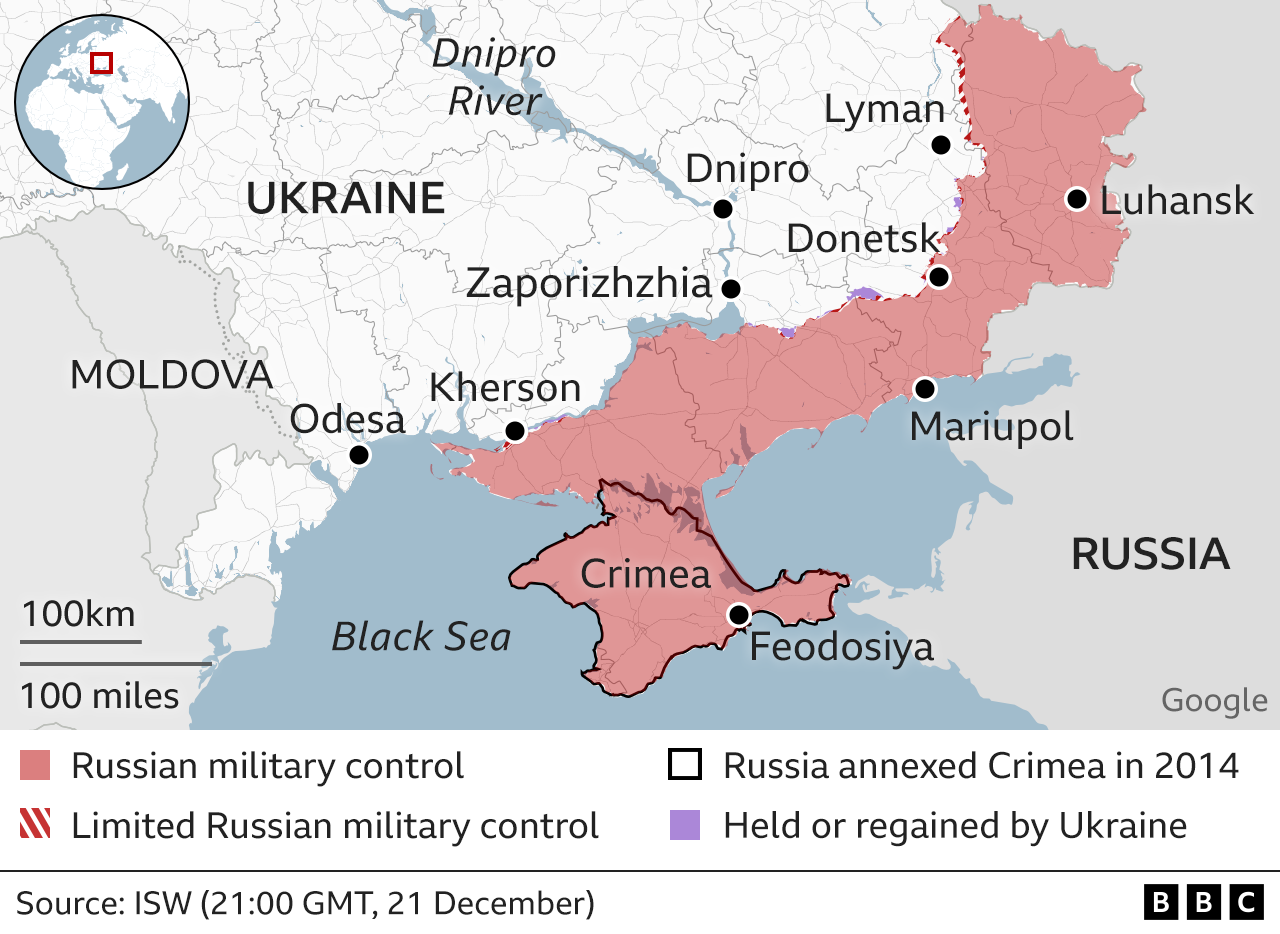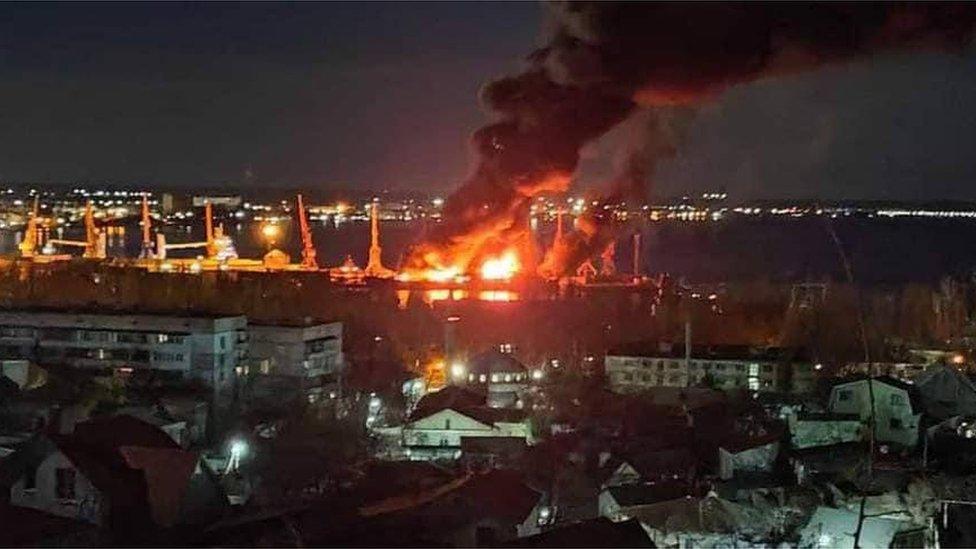Ukraine war: Does attack on Russian ship make a difference?
- Published

Satellite images showed the landing ship Novocherkassk docked at Feodosiya first on 5 December (L), then on 26 December
It was an explosion which filled the sky and lifted Ukrainian morale.
For Kyiv, the sight of Russia's Novocherkassk landing ship being hit in an air strike was a much-needed boost.
With Russia gaining the upper hand in recent weeks and the West's support stuttering, Ukraine has produced another dramatic missile strike in occupied Crimea.
Spectacular? No doubt. But was it significant?
"As it wasn't a battleship, you might think it's not crucial," explains Alina Frolova, who was Ukraine's deputy defence minister between 2019-2020 and is now with the country's Centre for Defence Strategies.
"But we need to look at the full context, it's a step-by-step process."
Both Ukraine and the UK now say that 20% of Russia's Black Sea Naval Fleet has been destroyed since the start of its full-scale invasion - no mean feat for Ukraine, a country whose navy barely has any ships.
Mostly, Russia's vessels have been destroyed with long-range Storm Shadow missiles supplied by the West.
Watch: Huge explosion as Russian warship hit by missile
That has diminished Russia's ability to launch missile strikes from the sea, and any possibility of it mounting an amphibious attack from the sea is even less likely. It has also unblocked ports like Odesa which has allowed Ukrainian and international cargo ships to travel along an unofficial route.
Frolova thinks this latest strike in Feodosia is a continuation of Ukraine squeezing Russian supply routes to Crimea, and therefore weakening Moscow's grip on the peninsula, which it has held since seizing it in 2014.
"It demonstrates Ukraine's Air Force can operate in the face of Russian air defences," she says. "Ships like this are used to deliver ammunition and drones. Based on the detonation, there were a substantial number of explosives on board."
Ukraine's Navy claims up to 80 people were on board too.
Land, sea and air
There are four ways Russia supplies Crimea, according to Serhiy Kuzan, co-founder of the Ukrainian Security and Co-operation Centre think-tank:
Over the Kerch Bridge, which connects Russia to Crimea
Through the land corridor Russia now occupies on mainland Ukraine
By flying cargo planes from Russia
By water through the Black Sea or Sea of Azov.
Kuzan is confident Russia will have felt this strike. He says because the Kerch Bridge was damaged from previous Ukrainian attacks, Moscow had to look at other means to supply the Crimean peninsula.

Russia says the Novocherkassk was damaged, while Ukraine says it was destroyed (file image)
"Ships allow them to move large loads relatively quickly," he says. "These large ships are intended for carrying up to 500 tonnes of people and equipment."
The Novocherkassk was one of 12 Russian landing ships, according to Kuzan, of which he says Ukraine has now destroyed half.
Kherson, but bigger
Moscow is currently able to control the front lines in Ukraine. But Kuzan suggests these are not disconnected from Crimea.
"We can't separate the peninsula from the south of Ukraine, namely the occupied parts of the Zaporizhzhia and Kherson regions," he says.
As with the liberation of Kherson city last year, Kuzan is optimistic the battles at the front could move in Ukraine's favour if they could eventually lessen Russia's air superiority and frustrate its supply lines to its troops.
This is exactly what led to invading forces retreating across the Dnipro river to the eastern bank in November 2022.

But this time we are talking about a lot more territory. And it is a different story in the east, where Moscow has captured almost all of the town of Mariinka.
Should Ukrainian land forces ever reach Crimean soil, the battle for its liberation would likely be bloody. By carrying out these missile strikes Kyiv is playing the long game by trying to make Russia's presence there untenable.
The problem for President Volodymyr Zelensky is, time is not Ukraine's friend. Some in the West want a faster return for the billions of dollars of aid they have provided so far.
Additional reporting by Hanna Tsyba
Related topics
- Published26 December 2023
